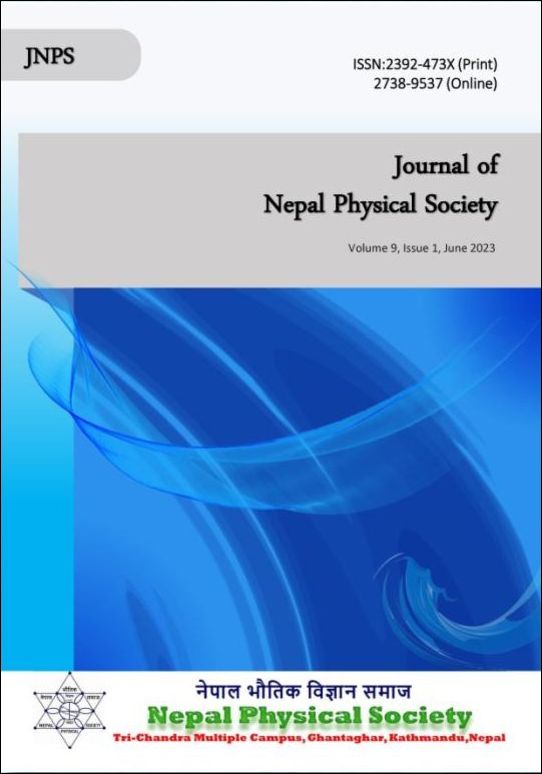A Comparative Analysis of Force Fields of Drug-Like Molecules: Omeprazole, Favipiravir and Amoxicillin by using Bonded and Non-Bonded Potential Distributions
DOI:
https://doi.org/10.3126/jnphyssoc.v9i1.57599Keywords:
Bonded and non-bonded energy, CHARMM27, CHARMM36, Drug-like molecules, Force field potential function, OPLS-AAAbstract
This research aims to compare and analyze the force field parameters of drug-like compounds generated by the online servers CGenFF, SwissParam, and LigParGen. CHARMM27, OPLS-AA, and CHARMM36 force fields of amoxicillin, favipiravir, and omeprazole have been examined by bonded and non-bonded energy distributions of the potential function. The local terms of the force field function are bond length, bond angle, and dihedral potentials, while the non-local terms are van der Waals and pairwise electrostatic interactions. The parabolic curves of bond length potential appear to internally bend because of the larger values of force constants. The bond length and angle energies are lowest at reference values for each of the corresponding atom pairs in the molecules. The higher values of the bending force constant positively deflect the sinusoidal curve from the equilibrium position according to the dihedral angle energy distribution. The Lennard-Jones interaction exhibits the same repellent nature at closer ranges and the same attracting nature at farther ranges whereas a mildly differentiated interaction is seen at the intermediate state as a result of changing well-depth parameters. Depending on the size of the optimized partial charges, it is discovered in electrostatic interaction that the distributions of end-to-end lengths of identical atom pairs are more exponentially skewed from one another. The main cause of inconsistency in the results of MD simulations for the same protein-ligand system is due to the shifted topology and parameters.
Downloads
Downloads
Published
How to Cite
Issue
Section
License
All right reserved. No part of this Journal may be reproduced in any form or by any electronic or mechanical means, including information storage and retrieval system, without permission in writing from the publisher, except by a reviewer who may quote brief passage in a review. The views and interpretation in this journal are those of author(s) and they are not attributable to the NPS.




